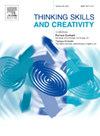Critical thinking and L2 learning in the persian context: A Meta-analysis
IF 3.7
2区 教育学
Q1 Social Sciences
引用次数: 0
Abstract
Correlational studies are one of the rich literatures in Iranian English as a Foreign Language (EFL) studies. In the present study, an attempt is made to provide a systematic review of the correlational studies of Critical Thinking (CT) and Second Language (L2) conducted in Iran. The studies were retrieved from both English and Persian indexing sources such as Google Scholar, Noormags, Civilica, and the Scientific Information Database (SID). Thus, the gray literature was not included. The risk of bias in this systematic review was considered and computed. This review followed the fixed stages of the statistical systematic review, and 77 effect sizes out of 53 published studies were identified. After eliminating seven outliers, 70 studies were included in the meta-analysis (N = 9,120). The findings uncovered that CT and EFL learning had a remarkable relationship in Iran. The results covered that language proficiency is complex and requires further investigation and distinct L2 learning-related skills were moderators among the included studies. Based on the findings, EFL learners of Master of Arts (M.A.) levels showed higher associations with CT. Since this meta-analysis can be considered one of the pioneers in internationalizing CT in EFL education, this study might be a cornerstone for subsequent steps in the teaching and research of CT in Iranian EFL educational fields. However, the high heterogeneity and potential publication bias underscore the need for cautious interpretation and further research.
波斯语环境中的批判性思维和 L2 学习:元分析
相关研究是伊朗英语作为外语(EFL)研究的丰富文献之一。本研究试图对伊朗开展的批判性思维(CT)和第二语言(L2)的相关研究进行系统回顾。这些研究是从谷歌学术、Noormags、Civilica 和科学信息数据库 (SID) 等英语和波斯语索引来源检索的。因此,灰色文献未包括在内。本系统综述考虑并计算了偏倚风险。本综述遵循统计系统综述的固定阶段,从 53 项已发表的研究中确定了 77 个效应大小。在剔除 7 项异常值后,70 项研究被纳入荟萃分析(N = 9 120)。研究结果表明,在伊朗,CT 与 EFL 学习有着显著的关系。研究结果表明,语言能力是一个复杂的问题,需要进一步研究,在纳入的研究中,与 L2 学习相关的不同技能是调节因素。根据研究结果,文学硕士(M.A.)水平的 EFL 学习者与 CT 的关联度更高。由于这项荟萃分析可被视为 EFL 教育中 CT 国际化的先驱之一,因此这项研究可能会成为伊朗 EFL 教育领域后续 CT 教学和研究的基石。然而,高度异质性和潜在的发表偏差强调了谨慎解释和进一步研究的必要性。
本文章由计算机程序翻译,如有差异,请以英文原文为准。
求助全文
约1分钟内获得全文
求助全文
来源期刊

Thinking Skills and Creativity
EDUCATION & EDUCATIONAL RESEARCH-
CiteScore
6.40
自引率
16.20%
发文量
172
审稿时长
76 days
期刊介绍:
Thinking Skills and Creativity is a new journal providing a peer-reviewed forum for communication and debate for the community of researchers interested in teaching for thinking and creativity. Papers may represent a variety of theoretical perspectives and methodological approaches and may relate to any age level in a diversity of settings: formal and informal, education and work-based.
 求助内容:
求助内容: 应助结果提醒方式:
应助结果提醒方式:


